Jacksonrubin
On this page, you find all documents, package deals, and flashcards offered by seller jacksonrubin.
- 32
- 0
- 1
Community
- Followers
- Following
33 items
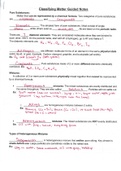
Chemistry: Classifying Matter
From elements (diatomic), compounds, and allotropes to mixtures like homogeneous, alloys, heterogeneous, suspensions, and colloids, this document provides in-depth notes into how to classify matter. A detailed graphic organizer is included to show the classification as well as dozens of diagrams and figures demonstrating the different mixtures. Information about physical and chemical separation techniques (filtration, distillation, decanting, electrolysis, etc.) as well as how to calculate densi...
- Package deal
- Interview
- • 4 pages •
From elements (diatomic), compounds, and allotropes to mixtures like homogeneous, alloys, heterogeneous, suspensions, and colloids, this document provides in-depth notes into how to classify matter. A detailed graphic organizer is included to show the classification as well as dozens of diagrams and figures demonstrating the different mixtures. Information about physical and chemical separation techniques (filtration, distillation, decanting, electrolysis, etc.) as well as how to calculate densi...
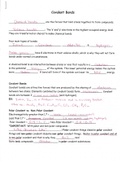
Chemistry: Covalent Bonds
This document defines, explains, and compares in detail the four main types of bonds (ionic, covalent, metallic, and hydrogen). Several diagrams and drawings are included to show different types of bonds, their symmetry, electronegativity, and more. Information about fats and bonding are also included as well as network solids.
- Package deal
- Interview
- • 6 pages •
This document defines, explains, and compares in detail the four main types of bonds (ionic, covalent, metallic, and hydrogen). Several diagrams and drawings are included to show different types of bonds, their symmetry, electronegativity, and more. Information about fats and bonding are also included as well as network solids.
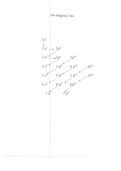
Chemistry: Diagonal Rule
The diagonal rule is a must-have resource for writing electron configurations.
- Package deal
- Interview
- • 1 pages •
The diagonal rule is a must-have resource for writing electron configurations.
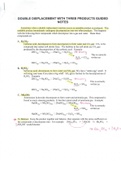
Chemistry: Double Displacement with 3 Products
In this document, you'll find notes about three compounds (H2CO3, H2SO3, and NH4OH) and how they contribute to double displacement reactions. You'll also learn how to balance these reactions as well as be given information about energy in reactions (exothermic, endothermic). Dozens of examples and practice problems are included for you to try.
- Package deal
- Interview
- • 3 pages •
In this document, you'll find notes about three compounds (H2CO3, H2SO3, and NH4OH) and how they contribute to double displacement reactions. You'll also learn how to balance these reactions as well as be given information about energy in reactions (exothermic, endothermic). Dozens of examples and practice problems are included for you to try.
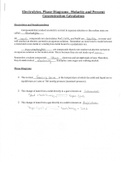
Chemistry: Electrolytes, Phase Diagrams, Molarity and Percent Concentration Calculation
This document is an in-depth guide to electrolytes and nonelectrolytes, drawing and reading phase diagrams, and rules for percent composition calculations. It includes many definitions, formulas, and dozens of examples and practice problems for you to try.
- Package deal
- Interview
- • 6 pages •
This document is an in-depth guide to electrolytes and nonelectrolytes, drawing and reading phase diagrams, and rules for percent composition calculations. It includes many definitions, formulas, and dozens of examples and practice problems for you to try.
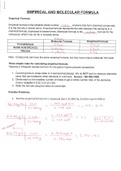
Chemistry: Empirical and Molecular Formula
This document explains and differentiates between empirical and molecular formulas. It provides rules and steps to calculate the empirical formula as well as the molecular formula. Dozens of examples and practice problems are included for you to try.
- Package deal
- Interview
- • 4 pages •
This document explains and differentiates between empirical and molecular formulas. It provides rules and steps to calculate the empirical formula as well as the molecular formula. Dozens of examples and practice problems are included for you to try.
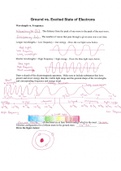
Chemistry: Ground vs Excited State of Electrons
This document offers a comparison between wavelength and frequency as well as ground vs excited states of electrons. Detailed notes about fireworks are provided as well. Figures and diagrams are provided as well showing wavelengths, light, and states of electrons.
- Package deal
- Interview
- • 2 pages •
This document offers a comparison between wavelength and frequency as well as ground vs excited states of electrons. Detailed notes about fireworks are provided as well. Figures and diagrams are provided as well showing wavelengths, light, and states of electrons.
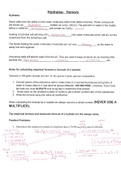
Chemistry: Hydrates
This document gives an in-depth overview of hydrates including their structure, properties, and anhydrous salts. It provides rules for calculating empirical formula or the formula of a hydrate and gives several examples and practice problems for you to try.
- Package deal
- Interview
- • 2 pages •
This document gives an in-depth overview of hydrates including their structure, properties, and anhydrous salts. It provides rules for calculating empirical formula or the formula of a hydrate and gives several examples and practice problems for you to try.

Chemistry: Important Polyatomic Ions
This document is a must-have resource for chemistry courses. It includes the names of 44 important polyatomic ions (organized by charge) and their symbol.
- Package deal
- Interview
- • 1 pages •
This document is a must-have resource for chemistry courses. It includes the names of 44 important polyatomic ions (organized by charge) and their symbol.
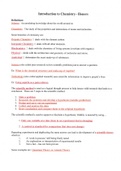
Chemistry: Introduction to Chemistry
This document includes dozens of definitions ranging from chemistry and its branches to the scientific method and its steps to interpretations and observations. Several examples and practice problems are included for you to try.
- Package deal
- Interview
- • 2 pages •
This document includes dozens of definitions ranging from chemistry and its branches to the scientific method and its steps to interpretations and observations. Several examples and practice problems are included for you to try.
